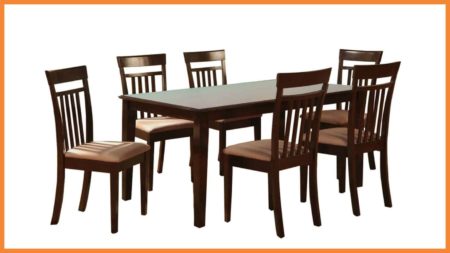Have you just purchased a new dining room set or an expensive conference table for your office? The last thing you want to happen is for the beautiful wooden surface to be scratched or stained. Follow this simple, 6-step process to measure and order your protective glass tabletop:
- Determine the glass thickness eg 1/4” or 3/8”
- Decide on the glass color eg clear, gray or bronze
- Choose between annealed or tempered
- Measure the dimensions: width * length
- Decide on the edgework: seamed or polished
- Describe the corners: square, radius, or clipped
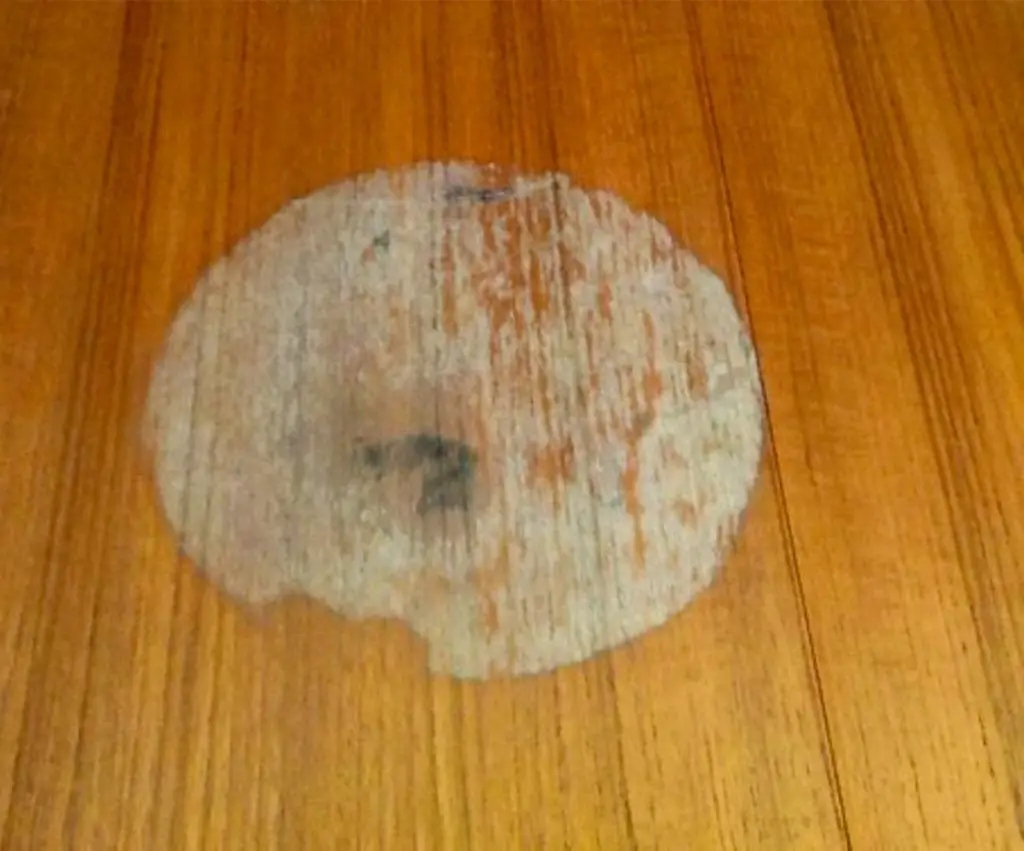
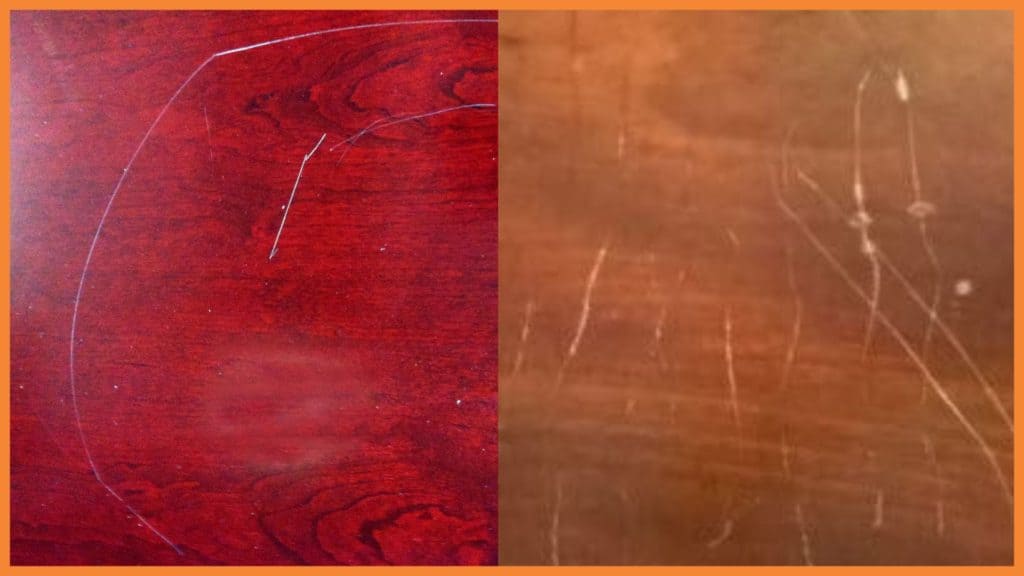
Safeguard your valuable furniture from stains and scratches!
Watch this informative video for everything you need to know about measuring a glass tabletop
1: Determine the Glass Thickness
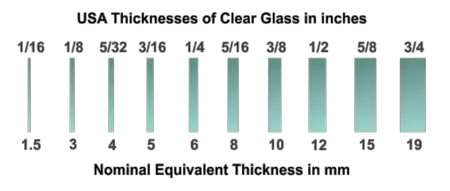
Choosing glass thickness is simple because the best choice for almost all protective tops is 1/4” thick glass. The only exception is the case of large conference tables in which holes are required for electrical wiring. In some large tabletops, 3/8″ glass is recommended for extra strength (consult your glass professional for advice).
2: Choose the Color of the Glass
Next – decide on the color of the glass – probably 95% of our customers choose the most affordable option which is clear glass (clear glass actually has a greenish tinge owing to its iron content). It is important to appreciate that the shade of green depends on the amount of glass you are looking through – so the edge of a long glass tabletop will look almost black.
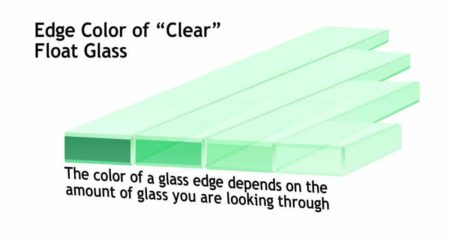
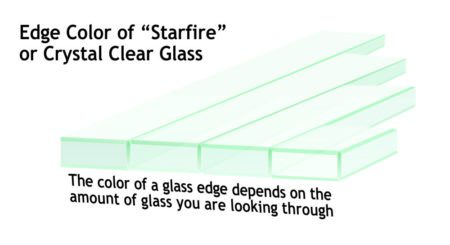

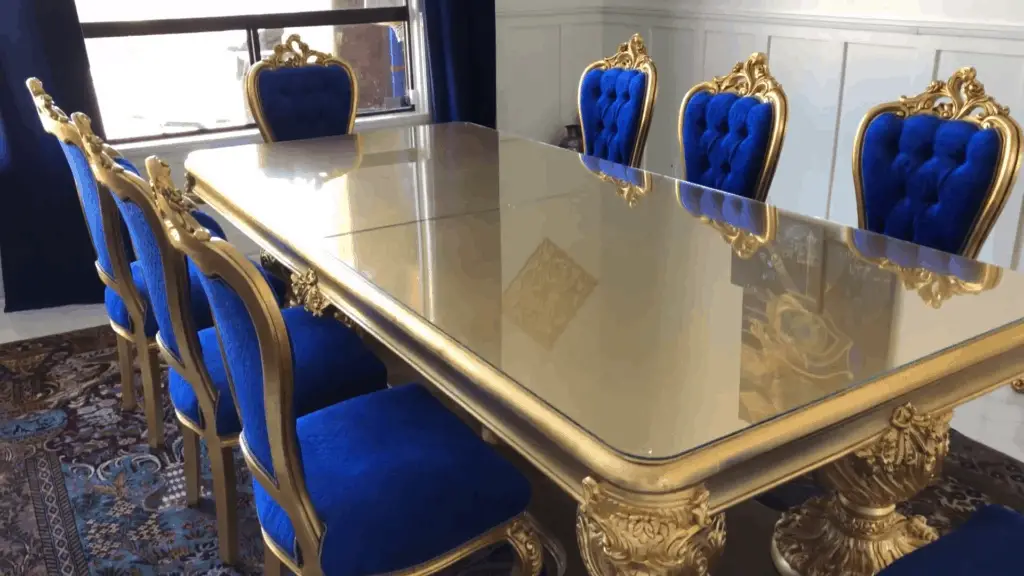
There are other color options for protective 1/4” glass, so come into our studio and look at samples if you feel you might prefer gray (commonly used with stereo or HiFi equipment), bronze, black – sometimes used to disguise damage or expensive low-iron (starphire) glass.
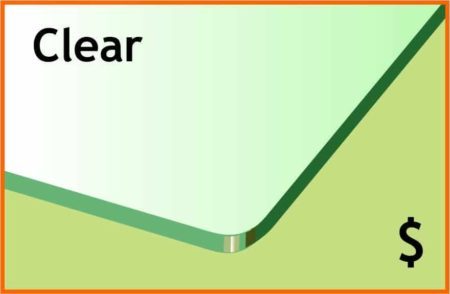
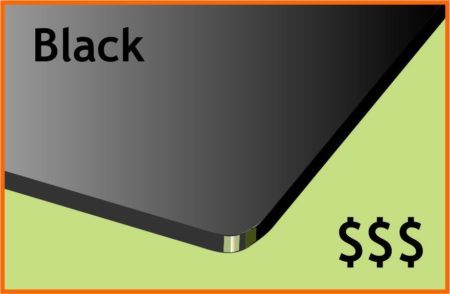
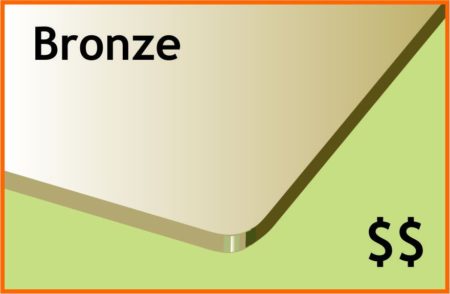
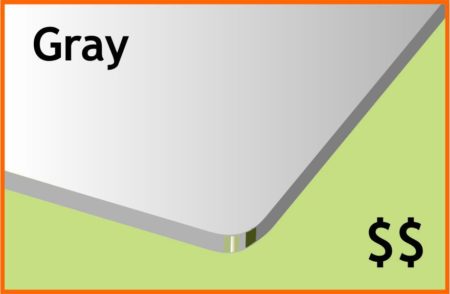
3: Decide Between Annealed & Tempered Glass?
Next, decide whether you want annealed or tempered glass. Most customers choose the more affordable annealed glass for protective tops because the danger of breakage is low.
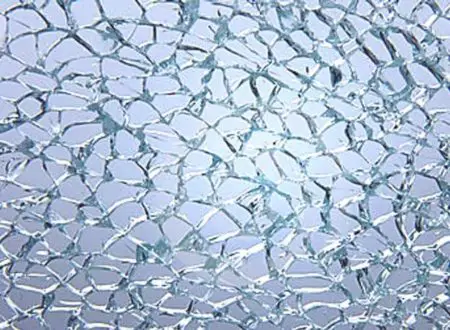
Tempered glass (above) is five times more impact-resistant, will withstand heat and is much safer when broken.
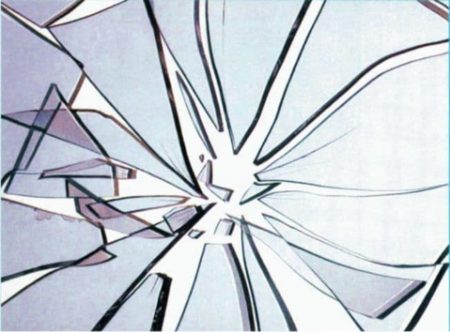
Regular annealed glass (above), in contrast, is not heat resistant and is potentially more dangerous.

Building safety codes do not mandate tempered glass for tabletops so the choice is up to you. Safety-conscious customers (maybe if you have teenagers in the house or if you insist on placing very hot saucepans on the glass) – may prefer to play it safe with tempered glass.

4: Measure the Tabletop
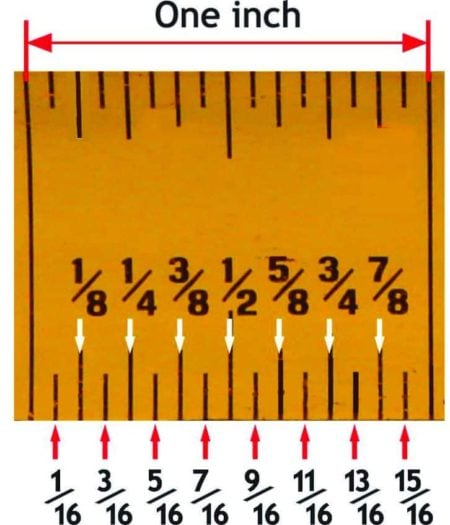
The next, and most crucial, step is to carefully measure the width and length of the table – if you are not already familiar with a tape measure – notice that an inch is divided into 16ths.
Measure to the nearest 1/16″ – and for more confidence use a 2nd tape measure to double-check your readings – Remember – if your table is too big, we cannot grind off 1/8” the correct the error.
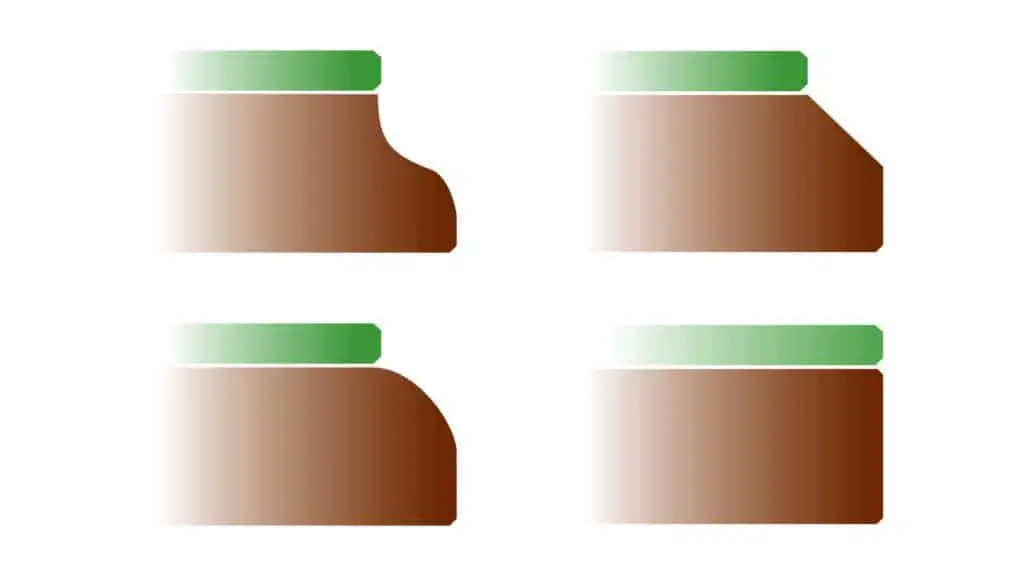
For the best results – study the edge profile of your table to see if it is rounded or beveled. Measure the dimensions of the FLAT part of the tabletop – we do not recommend letting the glass overhang the table edge.
Measuring a Circular Tabletop
Follow the instructions above to take into account the edge profile of your table but note that only one measurement (the diameter) is needed to specify the size of a circular top.
Unusual Table Shapes – Ovals and Trapezoids
See the section on conference tables for a description of common table shapes. In brief, racetrack ovals can be described with two measurements (length and width) but most unusual and curved shapes will need a template. Call John or Tim at Artistry in Glass (520-320-01040) for advice.
5: Decide on the Edgework – Seamed or Polished
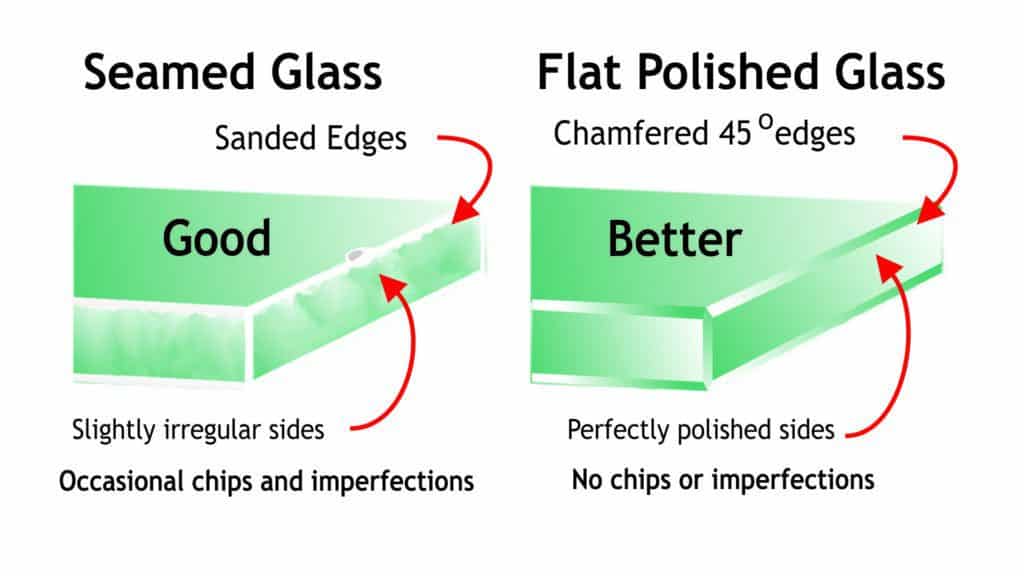
Economical “seamed” glass (left) is OK for work tables but a perfect flat-polished edge is the best choice for furniture. Many customers are under the misconception that beveled means smoothed or polished. Beveling refers to the laborious process of grinding and polishing a, generally 1″, wide decorative, angled border. Bevels are most commonly used as a decorative effect on mirrors but sometimes are a feature of thick dining tables or coffee tables. Unless you need to match your protective glass with other furniture, we strongly recommend flat-polished edgework for a functional, modern, and more affordable alternative to beveling.
6: Describe the Corners – Square, Radius, or Clipped
Finally, check the table corners: most rectangular tops have square corners and we round them slightly to remove the sharp point. Some tops need rounded corners – these are specified by the radius of a circle that defines the corner. In a similar way, clipped corners are defined by the length of the side of the square that defines the corner. If the corners are irregular or you having difficulties measuring – just make a tracing of the corner and bring it into our shop.

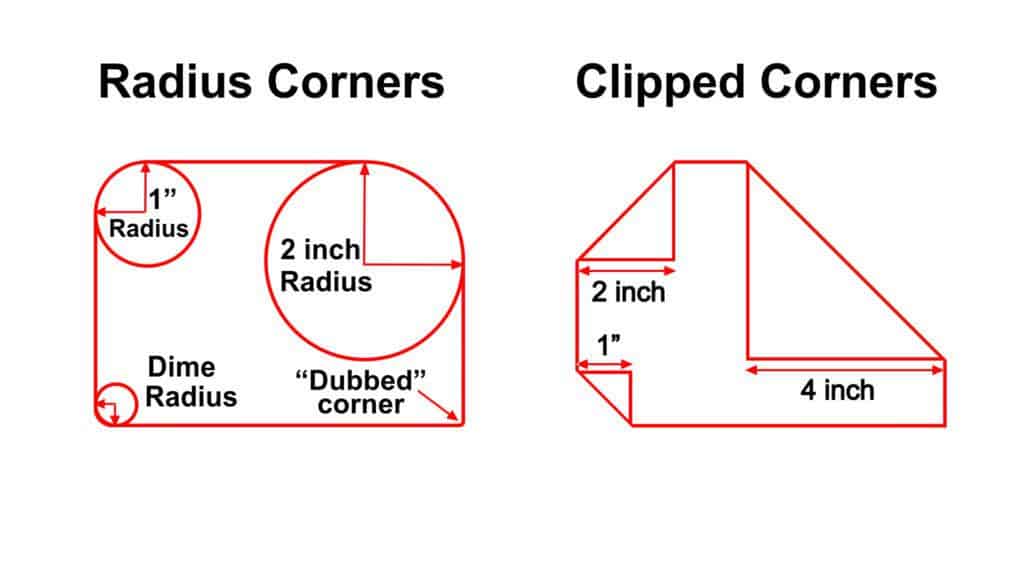
Finally: Call or Email Your 6-Point Details
For ease of ordering just call or email this 6-point list (with credit card details) to your local glass company (in Tucson, Arizona – call Artistry in Glass) and they will fabricate the glass for you to pick up in about a week – or ask about delivery to your home. For Southern Arizona pricing, go to this page on our TucsonTabletops website and enter the size of your top in inches.


Special offer: save $150!
If you feel, like many people, that it is time to invest in solar panels, to save on utility bills, AND help save the planet, then consider this great offer from Artistry in Glass!
Simply sign up with Solar Solution AZ and we will discount your glass by up to $150.00.
Four Main Shapes of Conference Tables
Tucsontabletops has more than 30 years of experience in the business of making glass to protect and enhance your expensive office or boardroom furniture.
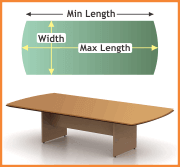
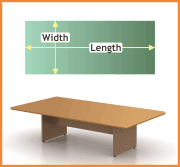
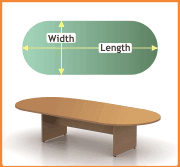
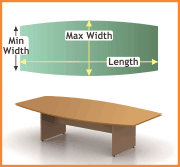
Wooden conference tables for lawyers and other corporate offices are expensive pieces of furniture that are very vulnerable to damage during overheated board meetings. The solution: safeguard your investment with protective glass. Note that rectangular and racetrack tabletops can be completely specified with just two measurements – length and width. Surfboard- and boat-shaped tops nearly always need a template or pattern to define the curved sides.
Special Table Shapes – Call Artistry in Glass
We specialize in custom-shaped tables. Bring in your own pattern, cut from stiff paper, or we will schedule a visit to make the template for you. The measuring cost depends on the distance from our Fort Lowell shop – call 520-320-0104 for details.
Examples of Custom Shapes from Artistry in Glass
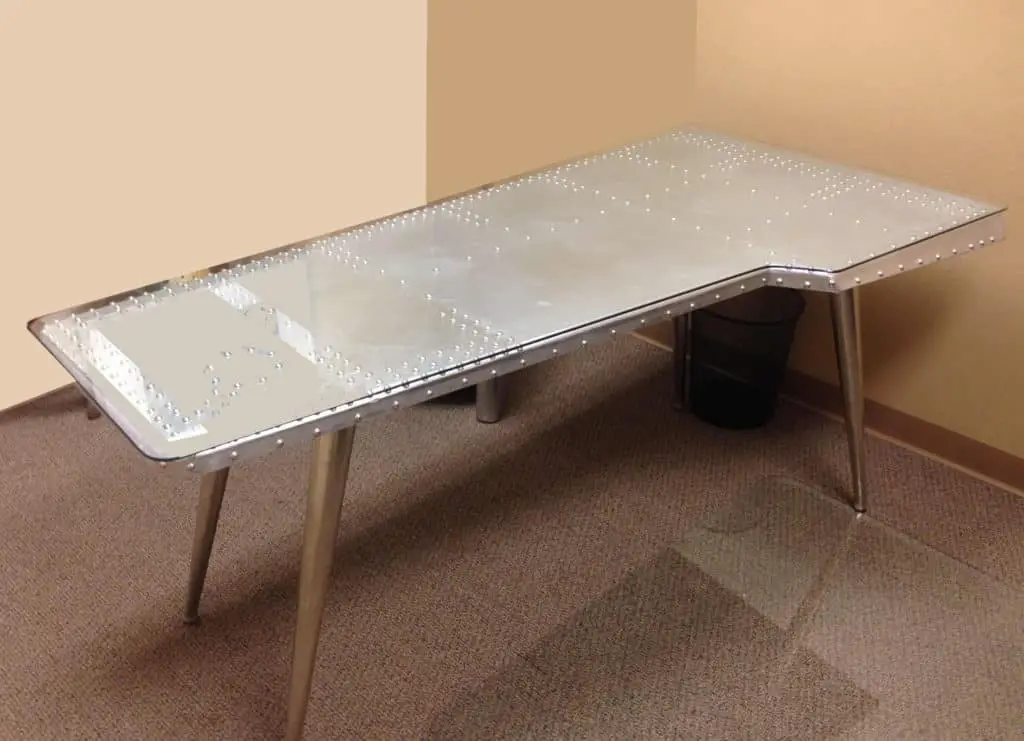
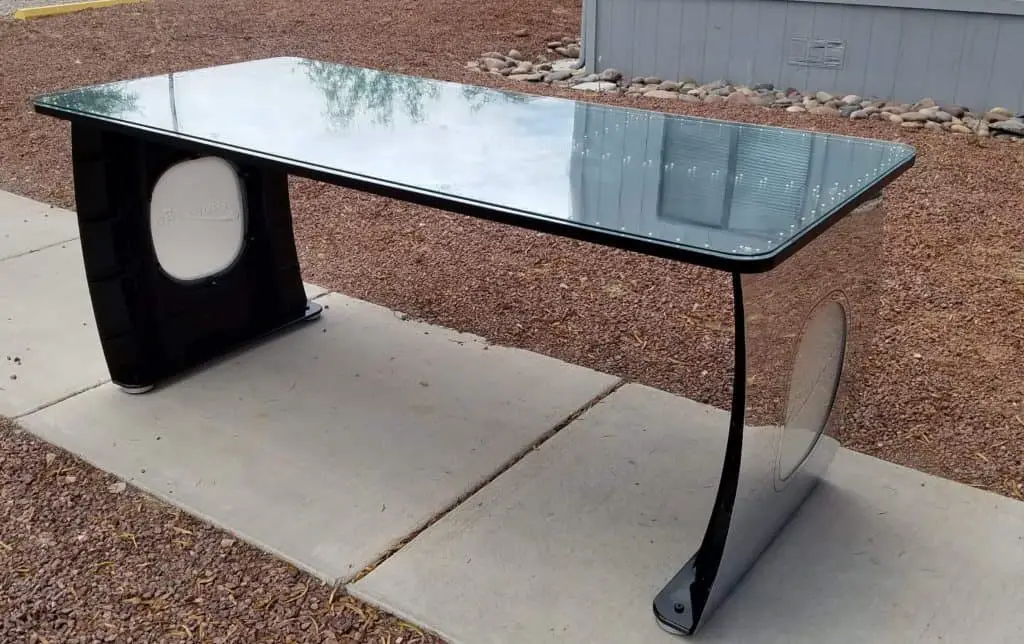
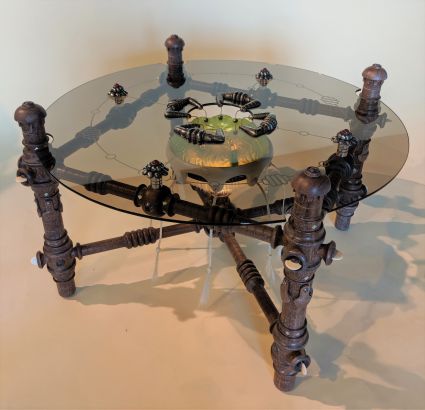
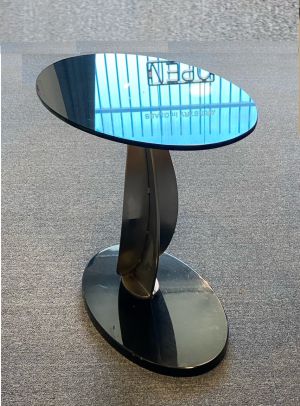
Cracked Glass Tabletops
Cracked or crackle glass, also known as shattered glass, is made from three pieces of tempered (heat-strengthened) glass laminated together. The middle piece is shattered into thousands of popcorn-like pieces to create a sparkling, crystal-like effect. Despite its appearance, it is perfectly safe and durable because the shattered piece is sandwiched between two high strength pieces of glass.
Watch how Artistry in Glass makes a cracked glass tabletop.
Do Not Delay – Protect Your Furniture Today
You never know when a careless grandchild or inconsiderate guest will mar your beautiful furniture forever with a misplaced coffee mug or hot casserole dish. Act now to protect your investment – call Artistry in Glass today!
If you break a precious antique – remember the experts:
- How to repair a broken china plate
- How to repair a broken china teapot
- How to fix a broken marble slab
- How to repair a broken china coffee mug
- All about repairing stained-glass lampshades
- How to care for your stained glass skylight
- Is stained glass worth repairing?
- To repair or toss out?
- Tucson crystal & china repair a division of Artistry in Glass
- What to do with broken antiques
- Should I resilver my antique mirror?
- Can I repair scratched mirror silvering?
- How to fix a broken mirror
- How to remove a mirror glued to the wall
- What is the best spray paint for mirror silvering?

